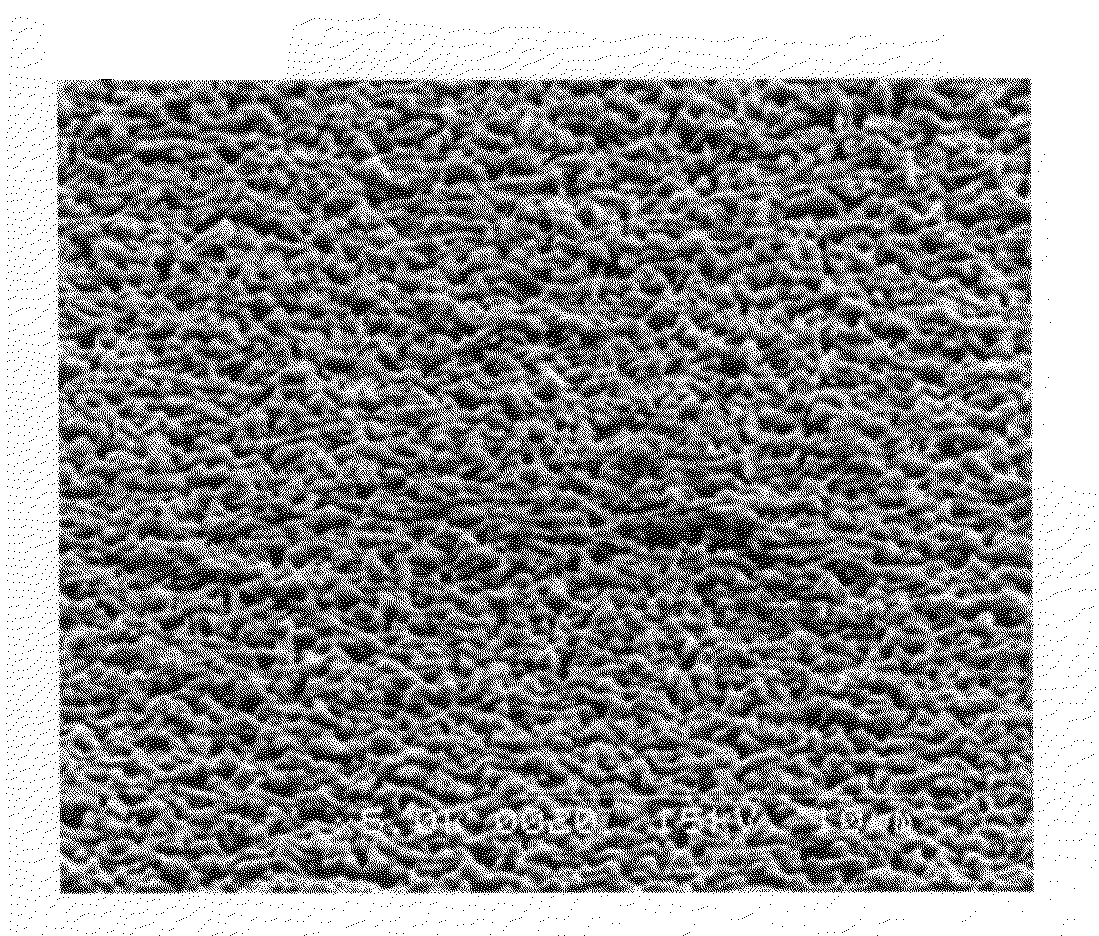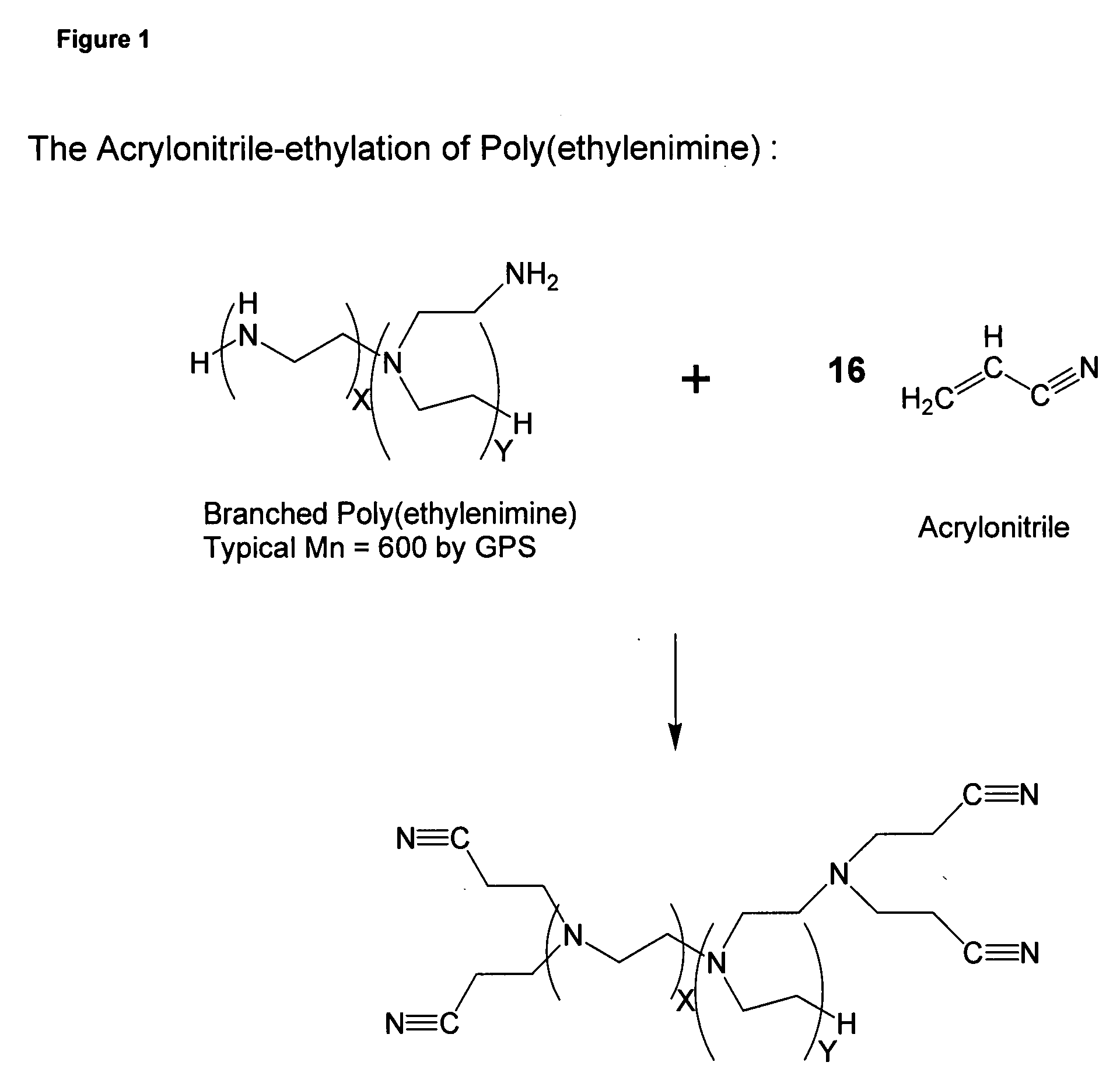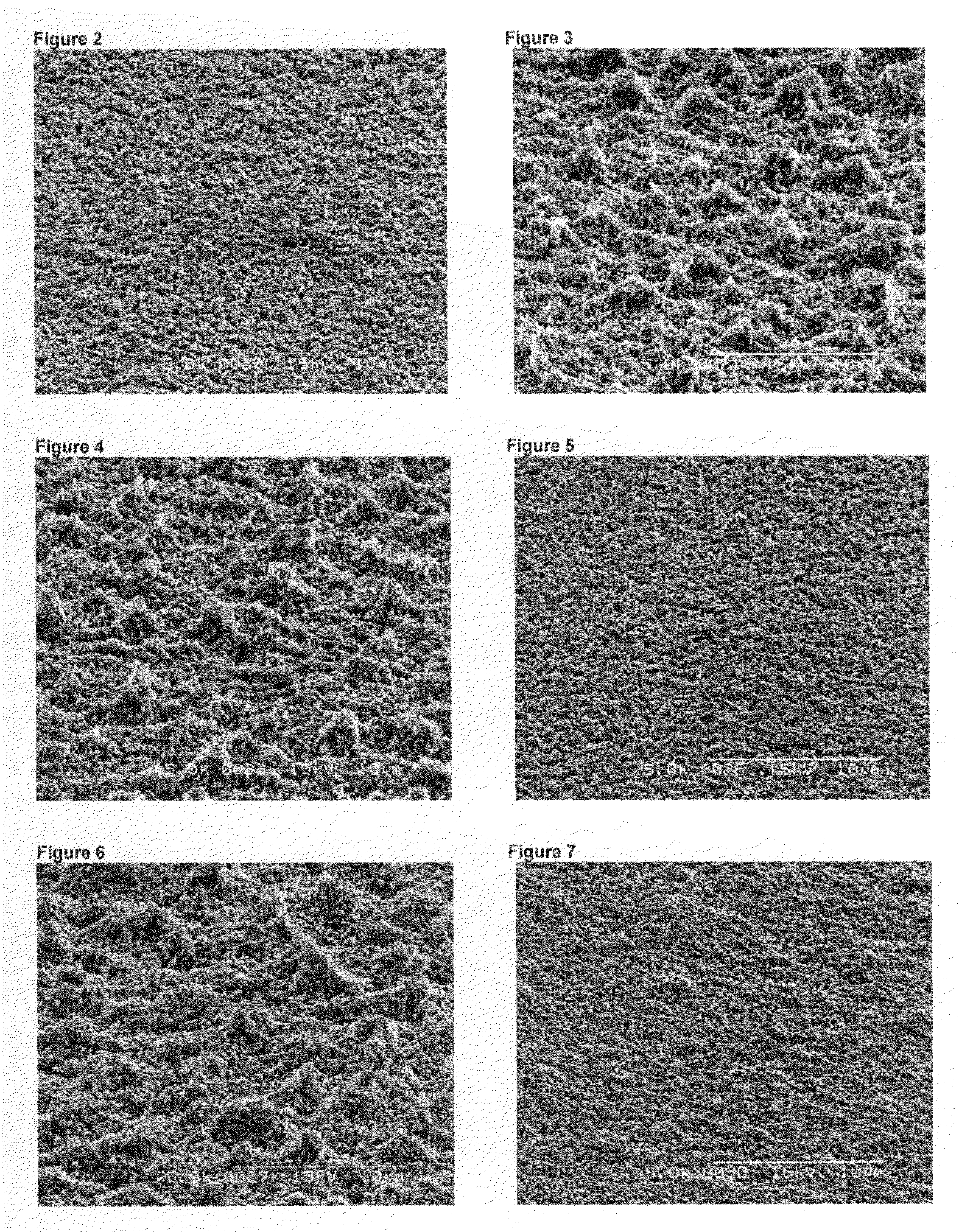Metal surface treatment composition
a technology of surface treatment and composition, applied in the direction of surface pretreatment, adhesive process, chemistry apparatus and processes, etc., can solve the problems of multi-layer composite cure or coating susceptible to delamination in subsequent processing, and achieve the effect of increasing the adhesion of a polymeric material
- Summary
- Abstract
- Description
- Claims
- Application Information
AI Technical Summary
Benefits of technology
Problems solved by technology
Method used
Image
Examples
examples
[0057]A roughening composition comprising a solution of cupric chloride and hydrochloric acid was prepared with different concentrations of the poly(ethyleneamino propionitrile)polymer (set forth in Table 1) of the invention as follows:
[0058]150 ml / l cupric chloride
[0059]10 ml / l hydrochloric acid (36%)
[0060]Samples 10 and 11 also contained 0.5 ml / l of adiponitrile.
[0061]Acid plated panels were used and the bath temperature was maintained at about 40° C. As set forth below in Table 1, most of the samples were immersed in the composition of the invention for 60 seconds and were then post-dipped in a solution of 10% hydrochloric acid for 30 seconds. In the alternative, for samples 6, 8 and 11, instead of immersing the panels in the roughening composition, the panels were spray treated with the composition. The results are set forth below in Table 1.
TABLE 1PolymerEtchingSampleConcentrationSurfaceRate#(g / l)Contacting meansAppearance(μinch)10.00Immersion, 60 sec.Semi-shining54.220.025Imme...
PUM
| Property | Measurement | Unit |
|---|---|---|
| Concentration | aaaaa | aaaaa |
| Concentration | aaaaa | aaaaa |
| Dimensionless property | aaaaa | aaaaa |
Abstract
Description
Claims
Application Information
 Login to View More
Login to View More - R&D
- Intellectual Property
- Life Sciences
- Materials
- Tech Scout
- Unparalleled Data Quality
- Higher Quality Content
- 60% Fewer Hallucinations
Browse by: Latest US Patents, China's latest patents, Technical Efficacy Thesaurus, Application Domain, Technology Topic, Popular Technical Reports.
© 2025 PatSnap. All rights reserved.Legal|Privacy policy|Modern Slavery Act Transparency Statement|Sitemap|About US| Contact US: help@patsnap.com



